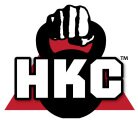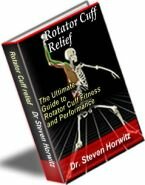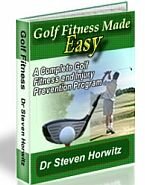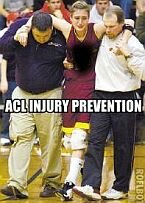Achilles Tendon Injuries
The Achilles tendon is the largest tendon in the body and connects the calf muscles (gastrocnemius and soleus) to the rear part of the heel bone (calcaneus). This tendon transfers the power of the calf muscles to the heel allowing one to rise up on the toes and push off with the toes.
Injuries of the Achilles tendon range from acute and chronic tendonitis (or tendinosis - see Achilles Tendon Pathology) - to partial and complete ruptures. In acute and sub-acute (2-6 weeks duration) Achilles tendonitis, the tendon is not torn but is inflamed. The tendon area may be swollen, red and painful to the touch. Often, there is pain when the athlete first rises in the morning but dissipates once the tendon is warmed-up during the day. If the tendon continues to be used, microtears occur which heal with scar tissue which is not as elastic nor is as strong as the original tissue. As the injury becomes chronic, adhesions begin to develop between the tendon sheath and the tendon which can permanently change the anatomy of the area. The athlete may feel a crackling or grinding sensation while rubbing the tendon or while lightly pinching the tendon when the foot is moved up and down.
The Achilles can withstand a force of 1000 pounds without tearing. Despite its tremendous strength, the Achilles tendon is the second most frequently ruptured tendon in the body. Most ruptures occur about two to three inches from where the tendon inserts on the heel bone. This area is the narrowest part of the tendon and has the poorest blood supply. (Tears may also occur in the belly of the gastrocnemius muscle.) Ruptures occur most often in the "weekend warrior" ages 20 to 50. The most common mechanism of injury is a quick and powerful toe off and flexion of the foot, as in sprinting.
In an acute Achilles tendon rupture the athlete will usually feel pain, not necessarily severe, or a "popping" sensation in the calf area. It is also described as a feeling of being kicked or shot in the calf. Often, the athlete will lose the ability to push off on the injured side. In a complete tear of the Achilles there will be a palpable defect in the tendon. The doctor will do a test where the patient's injured calf is squeezed. The test is considered normal if this squeeze causes a plantar flexion (bending downward) of the foot. If no foot movement occurs, this solidifies the diagnosis of a complete tear. If the tear is a partial one, the aforementioned test may be negative, but a palpable defect may still be present. Achilles tendon ruptures can be treated by surgical repair of the tendon or non-surgically by cast immobilization.
Overuse/overtraining, poor foot biomechanics, improper shoes, lack of flexibility, fatigue, poor conditioning, running without warming-up, a hard running surface and a sudden overstretch of the tendon are all causes of Achilles tendon injuries. Shoes with a proper fitting and sturdy heel counter are essential. Athletes who excessively pronate or have a high arch may need an orthotic to correct foot dysfunction. Training on various surfaces, avoiding excessive pounding (too much hill training), a proper warm-up and calf stretching exercises for both the gastrocnemius and soleus are important for injury prevention.
Initial treatment for Achilles tendonitis includes rest and ice. Cortisone shots are not used as they can cause even greater deterioration of the tendon. Application of ointments like Traumeel or Arnica can speed healing. Microcurrent (a type of electrical stimulation which uses microamperage instead of milliamperage) is very effective at wound healing, especially if used during the first week after the injury. The most important part of the care is to remove the adhesions caused by the tearing of the Achilles tendon. This can be accomplished using techniques like Active Release Techniques® and/or Graston Technique.
A heel lift (of about 1/8 - 3/8 inch) or compression brace can be used if necessary. The heel lift will shorten the distance over which the tendon must work thereby reducing the stress on the tendon. The lift is used temporarily until the problem resolves. A compression brace can help prevent further tearing of the tendon. Stretching of the soleus and gastrocnemius is added and performed gradually. Stretching of the gastrocnemius is done by putting two hands against the wall, one foot foreword and one foot back. Keep the knee of the rear foot locked. To stretch the soleus, the same position is used except bend the knee of the rear foot. The heel of the leg being stretched must be kept in contact with the floor in both stretches. Hold each stretch for 10-20 seconds and relax.
Strengthening exercises for the Achilles tendon include toe raises and moving the foot inward and outward against the resistance of exercise tubing. Start with 2 sets of 10 reps and built to 3 or 4 sets of 25+ reps.
Restoring both strength and flexibility after injury is important, but an often forgotten part of rehabilitation is called proprioception. Proprioception is defined as joint position sense or the ability of a joint and the surrounding tissue (muscle, tendon, ligament) to provide structural integrity and functional orientation during dynamic activities. If not restored, recurrent injury is likely. Balance training on a wobble board can be used to help restore proprioception of the foot and ankle after an Achilles tendon injury. A progression can then be made to hopping drills when pain and swelling is gone and a normal gait is attained. Proper shoe fit and training techniques should be discussed with your doctor and coach.
|
The Ultimate Nutritional Lie Detector Test LEARN MORE 
|
Kettlebell Rehab

Click Here
To See How Kettlebells will transform your body!
Vortex Rehab

Click Here
To See How This
Revolutionary Machine
Can Help You!
Partner / Support

Loans up to 3 months - fast cash advances for up to 90 days and up to $5,000!


















